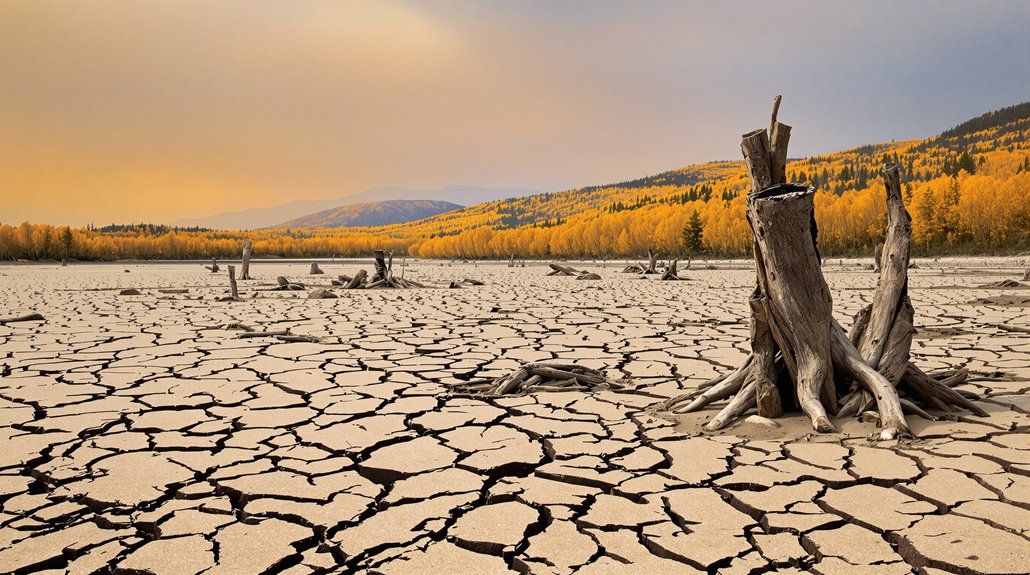California farmers are transforming farmland into recharge basins to combat the state’s severe aquifer crisis. These basins capture stormwater and allow it to seep underground, replenishing critically depleted groundwater supplies. The innovative approach combines with river restoration projects that reconnect waterways to natural floodplains. Collaborative efforts between farmers, water agencies, and environmental groups support the Sustainable Groundwater Management Act‘s 2040 goals. These solutions offer hope amid California’s ongoing water challenges.
Thousands of California farmers are turning to an innovative solution for the state’s critical aquifer crisis. After years of drought and unsustainable water use, they’re capturing excess floodwater to recharge depleted underground water supplies. This approach helps solve multiple problems at once – preventing flood damage while storing water for dry periods.
California faces an annual water shortfall of nearly 10 million acre-feet. As reservoirs shrink and wells run dry, farmers are feeling the impact through reduced crop yields and threatened farm viability. The crisis has led to land subsidence, streamflow depletion, and increasing stress on natural systems.
In response, farmers are transforming portions of their land into recharge basins that collect stormwater. These basins allow water to slowly seep into aquifers below. The practice, known as managed aquifer recharge, utilizes existing agricultural lands to restore underground water supplies.
Recent state policies support these efforts. Emergency executive orders now make it easier to divert flood flows for recharge. The Sustainable Groundwater Management Act requires balanced groundwater use and recharge, pushing more farmers to participate in these projects. Enacted in 2014, SGMA aims to regulate groundwater usage to prevent overdraft in California’s 450 groundwater basins by 2040.
Nature-based solutions play a key role too. River restoration projects reconnect waterways to their natural floodplains, allowing groundwater to replenish naturally. Despite state reservoirs holding over 120% of historical average, groundwater supplies remain critically depleted in rural areas where thousands of wells have gone dry due to decades of over-pumping. These efforts also restore riparian habitats, benefiting local ecosystems.
Farmers are adapting their practices in other ways. Many are shifting to less water-intensive crops and improving soil health to increase water infiltration. Smart irrigation systems and soil moisture monitoring help reduce overall water demand. These agricultural innovations align with the green revolution principles that promote environmental preservation while sustaining food production.
Technology investments are making these efforts more effective. New monitoring wells and data analytics help track recharge progress. Infrastructure upgrades improve floodwater diversion to designated recharge areas.
Multi-stakeholder partnerships between farmers, water agencies, and environmental groups are expanding these initiatives across the state. As climate patterns grow more unpredictable, these collaborative approaches offer hope for California’s water future.
References
- https://riverpartners.org/news/restoring-californias-depleted-groundwater/
- https://calmatters.org/environment/water/2025/02/california-groundwater-depleted-slow-recharge/
- https://www.ppic.org/blog/rising-to-californias-water-challenges-in-2025/
- https://www.gov.ca.gov/2025/01/31/governor-newsom-issues-executive-order-to-help-california-capture-and-store-more-water-from-upcoming-severe-storms/
- https://farmonaut.com/usa/california-water-crisis-5-shocking-impacts-on-agriculture








